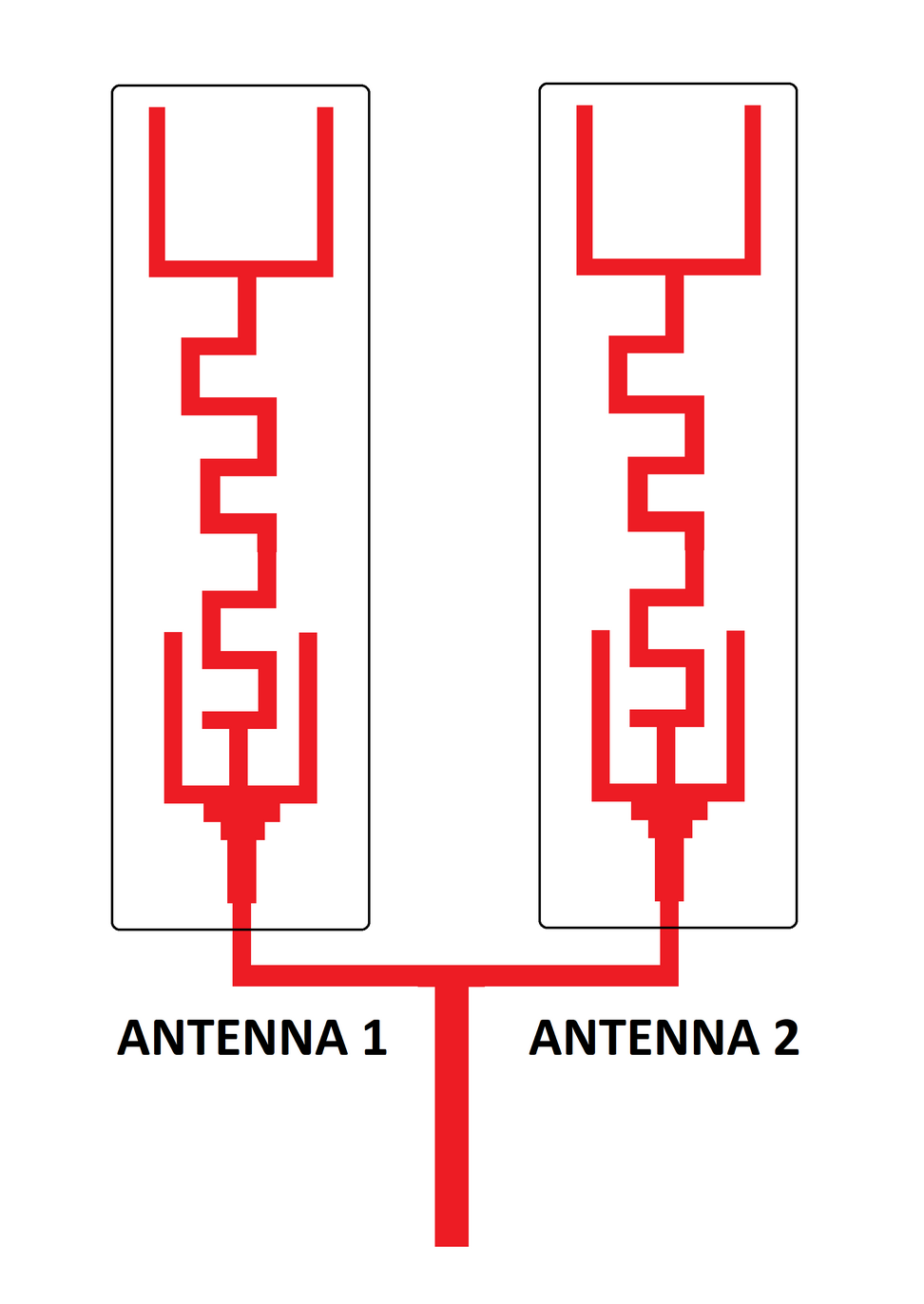I want to combine 2 identical PCB antennas to increase gain. The antennas are designed to work on 2.4GHz and have 50ohm impedance, linear polarization with Omni-Directional radiation pattern, they are supposed to be used in this way: a combined couple horizontally oriented in the bottom of a weather balloon, and another couple in ground station (this one could be used vertically oriented eventually). The goal is to improve communication between the weather balloon and the ground station.
 I'm wondering what would be the proper approach to do this without mess with antennas frequency range reception and worse performances in desired frequency range rather than improve them.
I'm wondering what would be the proper approach to do this without mess with antennas frequency range reception and worse performances in desired frequency range rather than improve them.
E.g. Consider the following scheme.

Is combining them in following way correct? If no, what should I expect from this configuration and what would be the proper way?
NOTE
I'm not talking about "antenna diversity" (that is based on the use of multiple different antennas that work separately and it requires additional hardware and integration), but to create a single bigger and more powerful PCB antenna combining 2 smaller antennas together.
